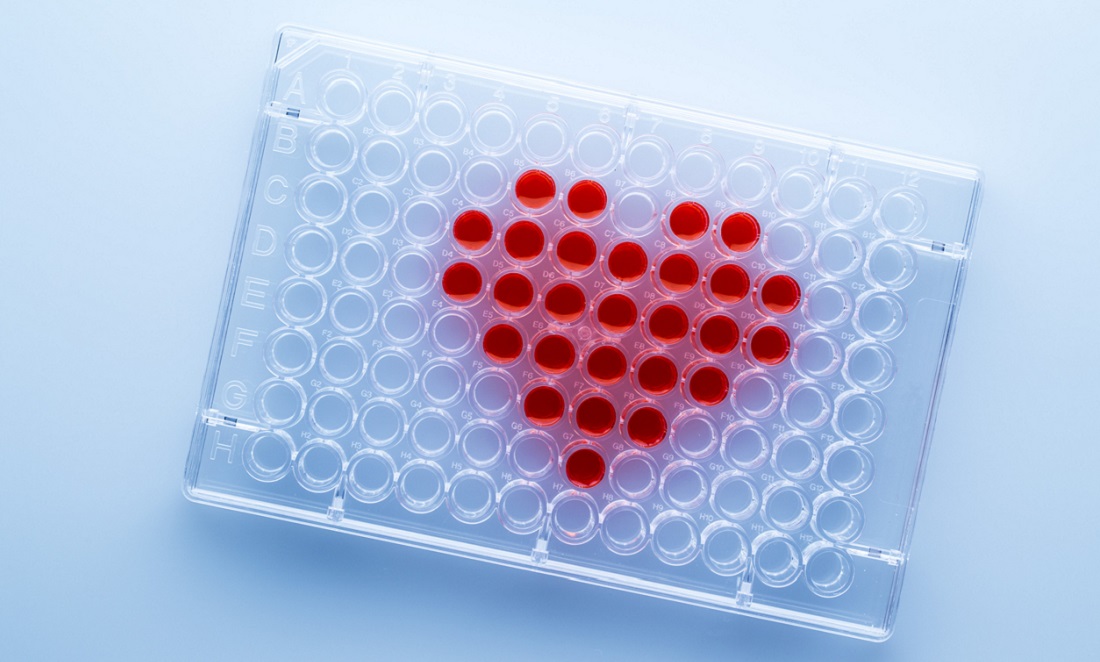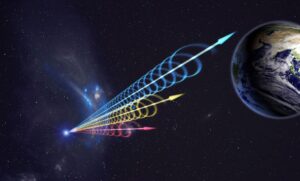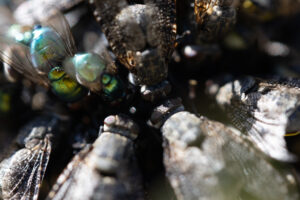What determines who we fall in love with? Is it a matter of circumstance? Is it written in the stars? Or is our romantic compass something that’s ingrained into our very being?
What if the type of people we’re into is determined by the very same internal code that dictates whether or not we like coriander?
That’s right, romance might be written in our DNA.
Thankfully, there’s now a service that can help you decipher your As, Ts, Gs and Cs and get to the bottom of this love thing once and for all.
LOVE IS IN THE AIR, AND IT SMELLS LIKE SCIENCE
DNA Romance is a website that promises to match you with potential partners based on your genes.
The theory is that your body produces chemical signals, as determined by your DNA. When a potential partner detects these signals (supposedly by smelling them), it creates ‘chemistry’—an innate sense of attraction that can’t be credited to your height, lack of debt or ability to play bass guitar.
Some dating services have tried to play off this theory in the past.
However, our ability to smell each other is often confounded by the deodorants, perfumes and colognes we wear. Now, DNA Romance is getting straight to the genetic source of chemistry.
It’s an interesting hypothesis but not really a new one. As the only person in the Particle team who lacks a significant other, it was natural that I be the one to test it.
After all, if gorillas can use a dating app to find love, why can’t I?
TRUST THE PROCESS
As quite a lazy person, the concept appealed to me.
Why should I get out of my pyjamas and put make-up on and go outside and try to be charming when my genes could do all the heavy lifting for me?
Also, if this scientific approach to finding love doesn’t work out, that’s OK too. Because instead of blaming my singledom on my personality or the fact that I eat peas one at a time, I can blame it on my ancestors.
So like the dutiful, single lab rat that I am, I spat in a little plastic tube, stuck it in a post box and sent it off for processing at the AncestryDNA factory.
A little while later, they slid into my inbox the results of my heritage and a text file of my raw genetic data.
(Coincidentally, 58% of me is from Great Britain, 25% from Scandinavia and the rest is a smattering of 10 other genealogical regions. Also, I now have a second cousin in Sydney.)
Anyway, I took the raw genetic data file and submitted it to the DNA Romance website along with my personality type, my gender and my sexual preference.
I also uploaded a photo. I chose one taken of me at my graduation ceremony. I’m mid-laugh and wearing a mortar board. I like to think it makes me look fun and also smart but also not weird. The very same photo I use for my author profile picture on this page, in fact.
Then, for the small price of CAD9.88, I was introduced to my matches.
BY THE NUMBERS
Your matches include everyone that you have a 70% or more genetic match with.
Now, based on past ratios of successful versus unsuccessful dating attempts, I would have expected the majority of my matches to be in the 70 – 85% range, perhaps with a few scattered in the middle and then maybe one around the 95% mark.
Surprisingly, the inverse seems to be true.
I had 13 matches in the 75 – 79% range, 26 matches from 80 – 89% and 41 matches from 90 –100%. Of these, 13 were actually a 100% match.

Which you’d think would make me feel pretty great—look how compatible I am! But automatically, I feel that DNA Romance is less satisfying than something like, say, Tinder because you don’t get that sparkly little self-esteem boost every time someone chooses to match with you. These poor fools can’t help if they dig me or not. It’s just who they are.
But actually, the high proportion of perfect scores makes me wonder if being a match for someone is the norm and it’s more unusual to find someone with DNA who is incompatible.
Anyway, after a quick scroll through these matches, it was apparent that DNA Romance has been more of a hit in the northern hemisphere.
Canada, UK and USA all had heavy representation, whereas there was only one Aussie—a 24-year-old guy from Sydney who had a Japanese manga character as his profile picture. When I asked him what he liked about the site, he said he forgot that he subscribed. Our DNA was a 100% match.
But what does that mean? What is it about Mr Shin-chan and I that is so perfectly compatible?
OPPOSITES ATTRACT
Well, like most things, it comes down to sex. Or rather, breeding.
When choosing a mate, we want to do what’s best for our offspring. We want our genes to perpetuate, and that means finding a partner who has a beneficial genetic contribution to make.
The world being as unpredictable as it is, often the best thing you can give is genetic variety.
If you mate with someone who has different DNA to yours, it means that your offspring will have a combination of the two. Should there be some change in the environment, your offspring are more likely to have something in their genes that will allow them to survive.
Conversely, mating with your fam can have some pretty detrimental effects.

King Charles II of Spain suffered severe physical and mental disabilities and was also infertile, likely thanks to centuries of inbreeding within his family, the House of Habsburg.
Now humans have it pretty easy here. We have family photos and Facebook and Ancestry.com to tell us who we should avoid incesting, but if you’re a mouse, how are you supposed to tell if this hunk sniffing your junk is a stranger or your brother?
Some research suggests that animals have evolved an ability to distinguish between relations and strangers by smelling differences in the chemicals they make.
For instance, the major histocompatibility complex (MHC) is a genetic sequence that codes for proteins that play an important role in immunity. These proteins live on your cells and help the body identify foreign substances like bacteria and viruses. Scientists believe it’s chemicals like these that act as interpersonal sex signals.
Research has shown that mice preferentially choose to mate with mice that have a different MHC to them. This is an ingrained, evolutionary sense that can help them avoid inbreeding.
And it’s this evolutionary biology that DNA Romance bases its matchmaking services on.
SNIFFING OUT THE TRUTH
Whether sniffing other people’s chemicals actually affects human psychology and behaviour is another question.
Some studies have demonstrated that genetic dissimilarity between participants correlates with measures of partnership, sexuality and the desire to procreate, as well as a women’s inclination to stay faithful or sleep around.
More studies have looked at the effect of odour itself rather than the genes that might determine it. Investigations have canvassed everything from the role of scent in female orgasms to sexual orientation. It is, however, dubious as to whether we can actually attribute a specific scent to chemicals like MHC and to determine what (if anything) they add to body odour.
Generally, there’s a conclusion that the scent of other humans affects our behaviour. What, how, why? These are questions we can’t answer right now.
But I did have some questions that I thought my matches could answer. I hit up a couple of likely candidates with a thumbs up and waited to see if anyone took the half-hearted bait.
ME AND MR 86%
Almost instantly, I got a response. Mr 86%, a librarian from Santa Fe, New Mexico, responded to my thumbs up with a sparkly heart and some polite small talk.
I had thought about asking him to send a worn t-shirt in the mail so I could get a whiff and see if the genetic analysis held any truth. I have a suspicion he would have agreed, but I erred on the side of not-creepy.
After telling him I was trying out DNA Romance for the purposes of writing an article, I asked him how he was finding the whole thing. His response was more intelligent than anything that will ever exist on Tinder.
“It depends on what you mean by ‘the whole thing’. I was pretty sceptical of the idea of genetic-based dating when I joined, seemed a little … eugenicsy? However, I was persuaded by the journal links on their page that it was at least not pseudoscience in the strictest sense; they are using genotyping as a predictor for a kind of in-person attraction …”
There was some discussion of the merits of personality typing, the DNA Romance business model and the positive dynamics of a female-skewed dating service.
Mr 86% then recommended to me the Open Humans Slack channel, which is an online community in which individuals can contribute their data (say, their DNA) to advance other people’s research projects. Open Humans was established to help individuals empower themselves by using their own data to learn about who they are as well as facilitating new kinds of research projects and enabling data reuse in the community.
THE FUTURE OF DNA
I was never going to be lucky enough to meet Mr 86% in person—Santa Fe is just a little too far to go just to sniff someone. I had thought about asking him to send a worn t-shirt in the mail so I could get a whiff and see if the genetic analysis held any truth. I have a suspicion he would have agreed, but I erred on the side of not-creepy.
So it’s a non-result for this single lab rat, and it remains unclear as to whether DNA Romance is actually useful for finding love.
One thing it is good for is raising questions. Rather than a life partner, I came out of the other side of this with more questions as to how the rules of attraction actually work. Would the smell of Mr 98% attract me more than Mr 75%? What if Mr 75% was a total dreamboat? Would my nose overrule my eyes?
Other than creating intrigue, DNA Romance functions as a platform that enables conversation with people you might not otherwise interact with (as well as providing ready-made talking points).
DNA Romance is also perhaps useful as an indicator of how we might live in the future. Once we understand our DNA more thoroughly, it’s not unreasonable to assume that it will impact not only our love lives but also our jobs, medical treatments, exercise regimes and diets.
In the meantime, it’s back to blindly feeling my way through the Perth dating pool. Wish me luck.








